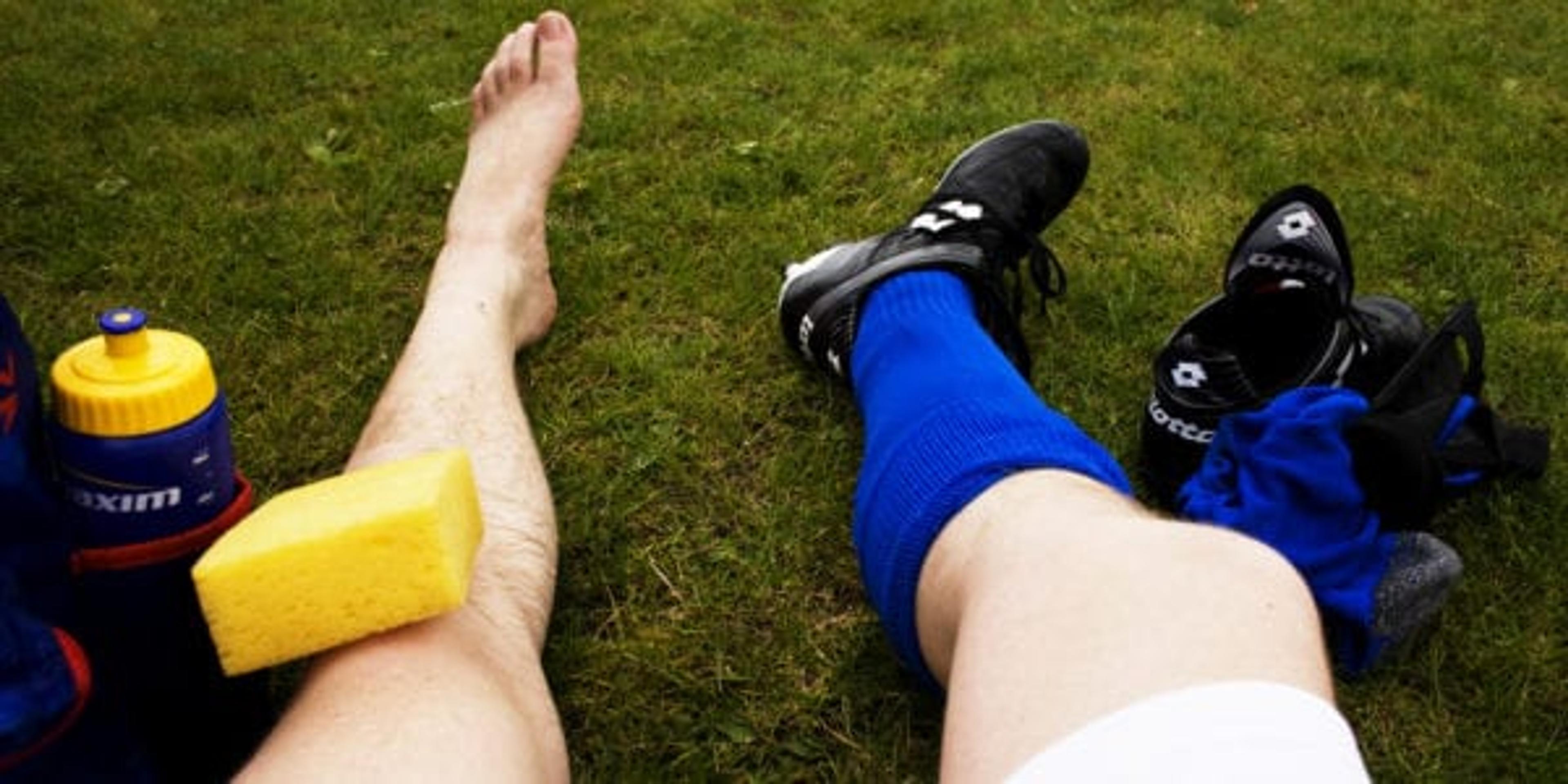Common Athletic Injuries and How to Avoid Them

Mekhi Stribling
| 4 min read

Regardless of the level of the sport, injuries are a part of the game. For many athletes, an injury can be a major setback or even possibly a career-altering event.
Here are a few some common athletic injuries and ways to prevent or improve each. Always consult with your healthcare provider first before starting a new workout routine.
Arm and shoulder injuries
Rotator Cuff Tears
One of the most common shoulder injuries is tearing of the rotator cuff. A rotator cuff strain is a tear to any of the four rotator cuff muscles in the shoulder. The majority of shoulder injuries in sports like tennis, swimming, and baseball are caused by repeated overhead movements. Rotator cuff injuries are typically characterized by weakness in the shoulder, reduced range of motion and stiffness.
To strengthen the shoulder and help prevent injury to the rotator cuff, try a heavy band row, a band pull or abduction shoulder dumbbell curls.
SLAP Tears
Another common shoulder injury is a SLAP (Superior Labrum Anterior and Posterior) tear. A SLAP tear is “an injury to the labrum of the shoulder, which is the ring of cartilage that surrounds the socket of the shoulder joint.” This is a significant injury because of its location. The labrum helps to deepen the socket and stabilize the shoulder joint. Some of the causes include dislocation, repetitive overhead movement and wearing of the labrum.
To help strengthen this area, try face pulls, or lunges and squats with overhead weights.
UCL Injuries
An Ulnar Collateral Ligament (UCL) injury is most common in throwers. Athletes have pain on the inside of their elbow, resulting in decreased throwing velocity. These are injuries are mostly caused from repetitive high-speed throwing.
To help prevent these, athletes can practice rotator cuff strengthening, extremity stretching and core strengthening.
Forearm Fracture
Forearm fractures are common in children playing on the playground or participating in sports. They can occur in a number of places along the forearm including near the wrist or in the middle of the forearm.
To help prevent forearm fractures, athletes and children can strengthen bones by getting enough calcium, wear protective gear and exercise regularly.
Leg, knee and ankle injuries
ACL Tears
A common leg injury in many sports, a tear of the ACL (anterior cruciate ligament), a crucial ligament in the knee is often caused by sudden changes in direction, speed, jumping and landing or from pressure or torque to the knee joint. Symptoms include pain, instability, pressure and swelling in the joint and treatment includes surgery in many cases and aggressive physical therapy.
To prevent ACL strains and tears, properly train and strengthen all muscles groups in the leg, use proper form when jumping and landing and use a knee brace if you have had a prior injury or instability.
Hamstring Strains and Tears
Hamstring injuries range from mild strains to a tear of one or more of the three hamstring muscles.
To prevent hamstring injuries, properly train all muscles in the leg, stretch properly before and after exercise and sports and avoid overuse by getting enough rest and recovery between training sessions, practices and games.
Leg Fractures
Stress fractures or traumatic fractures in the leg, including fractures of the tibia and fibula are two of the most common sports-related fractures.
To prevent leg fractures from sports, make sure to wear proper footwear for the sport you are playing, modify high-impact exercises to lessen the impact on the legs, eat a balanced and nutritious diet and manage weight, as excess weight can add strain and stress on the legs.
Ankle Sprains
Spraining your ankle is one of the most common ankle injuries for athletes. With any sport that involves running or turning quickly, spraining your ankle is a sure possibility. Ankle sprains are the most prevalent in soccer, basketball, and volleyball. They can range from mild to severe depending on the condition of the ligament.
To help prevent ankle injuries, try single-leg balances, calf raises and ankle circles.
Ankle Fractures
An ankle fracture involves breaking one or more of the bones that make up the ankle joint. It may take up to 3-4 months to return back to normal activity; however, it may take longer to return to sports.
Take precautions to prevent ankle fractures including wearing proper footwear. You can also do ankle-strengthening exercises such as ankle circles.
Related:
Photo Credit: Jan-Joost Verheof





